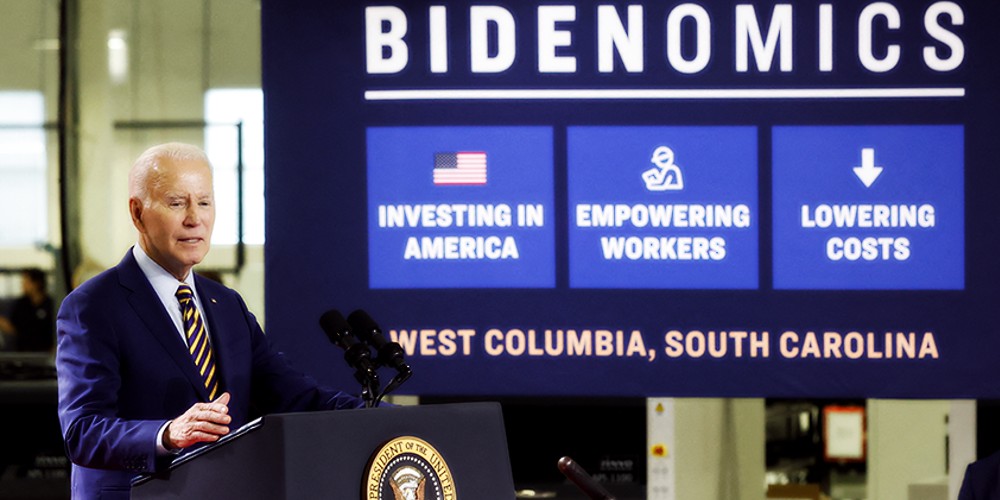Geopolitical instability in the Middle East unquestionably triggered a surge in the demand for gold as a safe-haven asset, causing prices to rebound from their seven-month lows. Nevertheless, another significant factor is currently exerting its influence on the market and helping to maintain gold’s value at the $2,000 per ounce mark, as per insights shared by Ryan McIntyre, Managing Partner at Sprott Inc, in an interview with Kitco News.
McIntyre’s optimistic outlook for gold comes amidst the metal’s resilience, holding its ground and staying above the $1,950 per ounce threshold. This resilience is particularly noteworthy given that bond yields have approached 5%, marking their highest level in 16 years.
According to McIntyre, the breakdown of gold’s historical negative correlation with bond yields is occurring due to mounting concerns about the fiscal situation of the U.S. government and its ever-increasing debt, which has now surpassed a staggering $33 trillion.
However, it’s not merely the size of the U.S. government’s debt that has McIntyre worried. He emphasizes, “The most concerning aspect for me is the deficit. I’m more focused on the trajectory of where things are headed. The rising deficit indicates that the U.S. is failing to get its financial house in order.”
Additionally, McIntyre points out that the elevated gold prices reflect the growing risk of the U.S. economy falling into a potential debt spiral, driven by higher interest rates leading to increased borrowing costs, which, in turn, necessitate more capital.
He draws parallels with a situation from last October when the U.K. bond market experienced turmoil after then-Prime Minister Elizabeth Truss proposed substantial tax cuts, financed through higher deficits. The financial market upheaval eventually cost Truss her position as Prime Minister.
Coffee the Christian way: Promised Grounds
The growing focus on the U.S.’ escalating debt is, in part, a consequence of the rapid increase in interest rates. With the Fed Funds rates ranging between 5.25% and 5.50%, the U.S. government is now allocating more funds to service its $33 trillion debt than it allocates to national defense.
Simultaneously, McIntyre highlights that, along with the Federal Reserve’s aggressive rate hikes, it has significantly reduced its balance sheet, leading to a substantial decline in the M2 money supply—essentially, the money held by the public.
“As the money supply shrinks, asset values inherently decline. To meet credit requirements at higher levels, you now need more assets. This is a precarious situation, and that’s why investors are turning to gold as a stable asset. If you don’t want to rely solely on U.S. government bonds, gold is the one safe-haven asset,” McIntyre explains.
While the Federal Reserve’s primary focus remains on controlling inflation, McIntyre contends that they should also be mindful of the risk that bond yields might detach from monetary policy.
Though it might be a bit premature, McIntyre envisions a scenario where the Federal Reserve maintains its hawkish stance but starts purchasing bonds to keep yields in check. Additionally, increasing the M2 money supply could help alleviate market tensions.
However, he acknowledges the Fed’s dilemma, as aggressive actions to address rising deficits could lead to concerns about an overly expanded balance sheet. “In the short term, it might achieve the desired effect, but it’s likely to make people more apprehensive. This is the challenge when control starts slipping away,” McIntyre notes.
Given this environment of uncertainty, McIntyre anticipates that gold will continue to perform well and remain in an upward trend until the government can rein in its spending—an eventuality that doesn’t appear likely in the near future.
Article generated from corporate media reports.
- Concerned about your life’s savings as the multiple challenges decimate retirement accounts? You’re not alone. Find out how Genesis Precious Metals can help you secure your wealth with a proper self-directed IRA backed by physical precious metals.
What Would You Do If Pharmacies Couldn’t Provide You With Crucial Medications or Antibiotics?
The medication supply chain from China and India is more fragile than ever since Covid. The US is not equipped to handle our pharmaceutical needs. We’ve already seen shortages with antibiotics and other medications in recent months and pharmaceutical challenges are becoming more frequent today.
Our partners at Jase Medical offer a simple solution for Americans to be prepared in case things go south. Their “Jase Case” gives Americans emergency antibiotics they can store away while their “Jase Daily” offers a wide array of prescription drugs to treat the ailments most common to Americans.
They do this through a process that embraces medical freedom. Their secure online form allows board-certified physicians to prescribe the needed drugs. They are then delivered directly to the customer from their pharmacy network. The physicians are available to answer treatment related questions.


